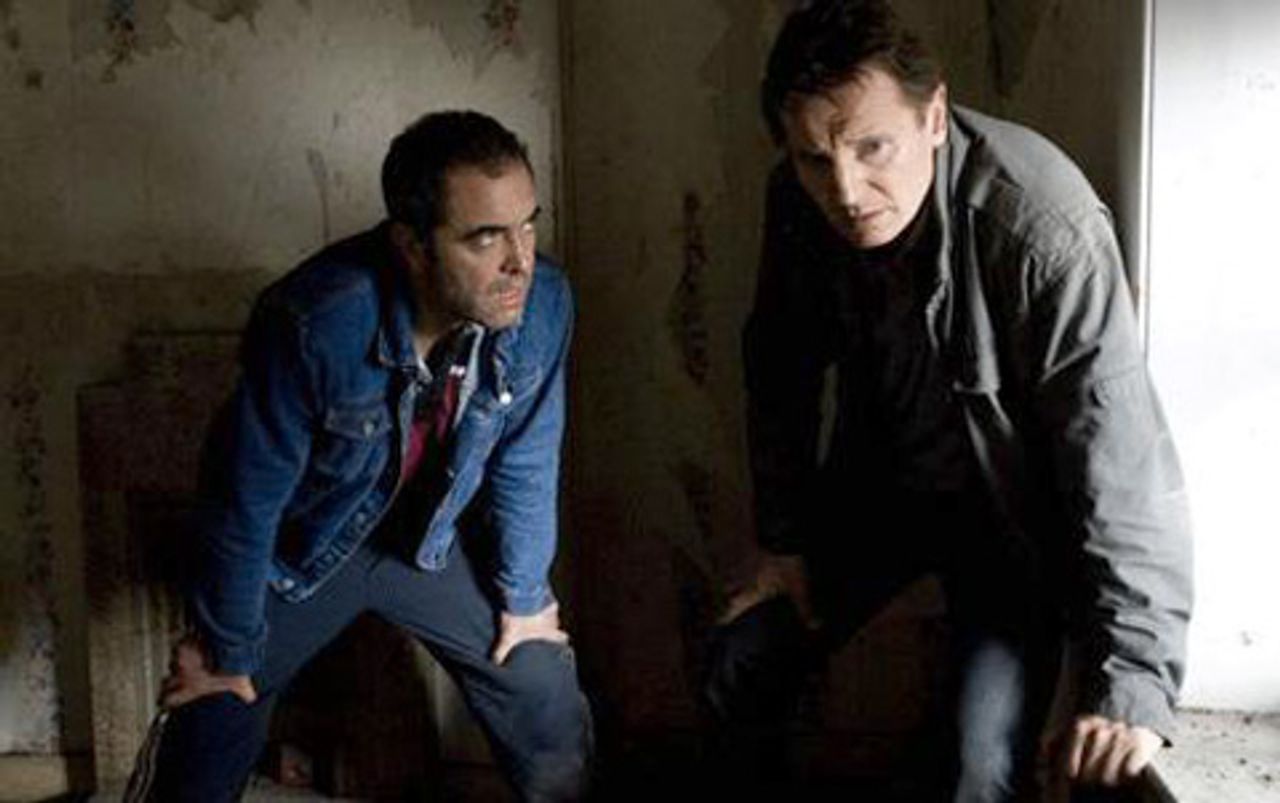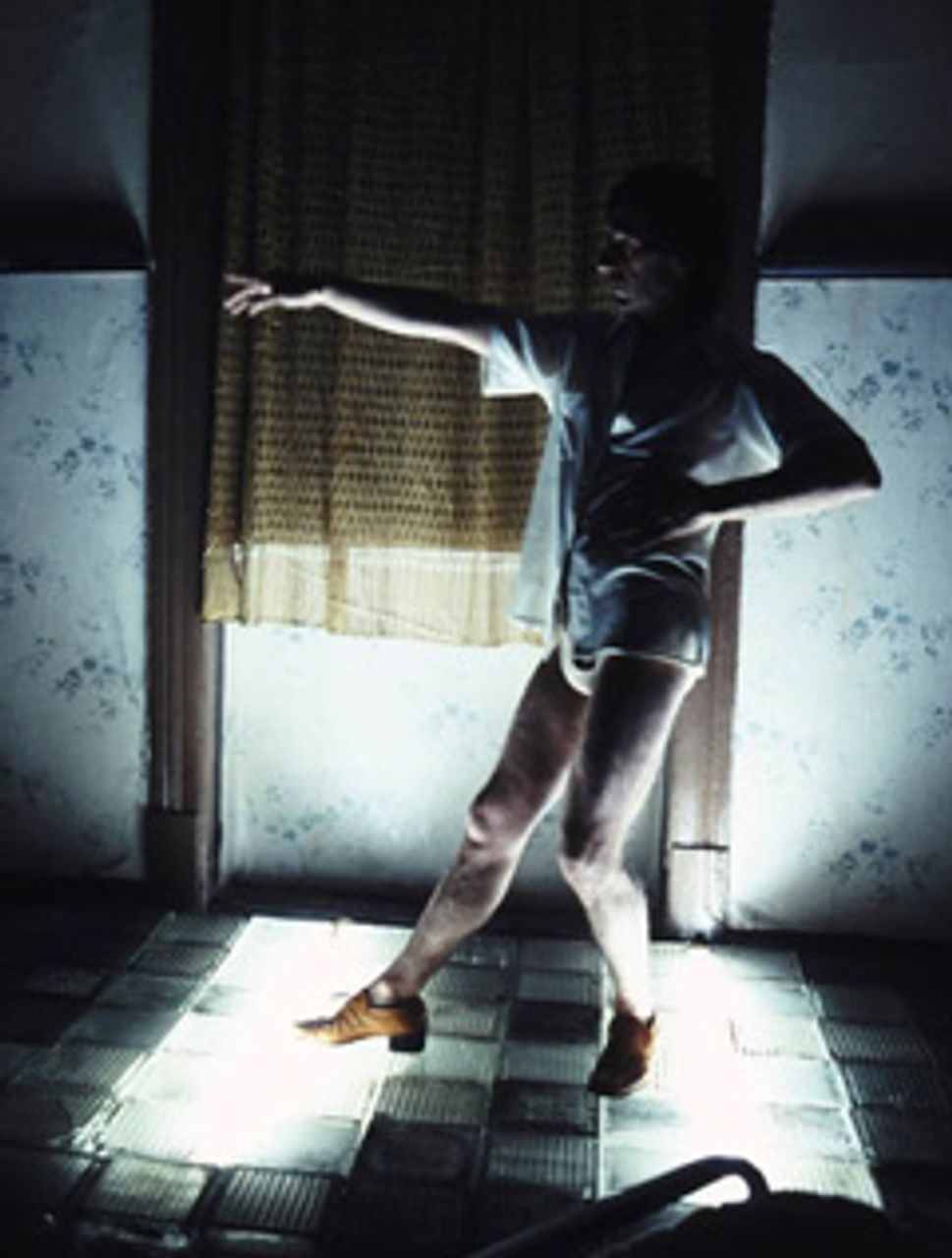This is the fourth in a series of articles on the 56th Sydney Film Festival. Part 1 was posted on July 9, part 2 on July 10 and part 3 on July 13.
It might seem obvious, but it’s worth repeating that filmmaking must take life as its subject matter: the real world and people within it. It has no other material to work with. And while cinema must be judged according to its own laws, the power of any work—the freshness of its imagery, characters and narrative—is connected to what it reflects about the social and historical events on which it is based.
This understanding, unfortunately, is not widespread. Many contemporary filmmakers attempt to separate the artistic from the social, and to examine the human condition as a purely personal and private affair. Society is understood only as a vague abstraction, a collection of individuals driven by disembodied psychological motivations. This approach ultimately produces limited and superficial results, and was reflected in a number of the features, some more than others, screened at this year’s film festival.
Sectarian violence
Five Minutes of Heaven is the latest offering from Oliver Hirschbiegel, director of the impressive Downfall: Hitler and the end of the Third Reich (2004) and the far less successful The Invasion (2007). Its subject matter is the sectarian violence in Northern Ireland as explored through a real event and a fictionalised encounter three decades later.
 On 29th October 1975, 17-year-old Alistair Little, a member of the Protestant paramilitary Ulster Volunteer Force, drove into a Republican area of Lurgan, Northern Ireland and shot 19-year-old Catholic Jim Griffin through the head, killing him instantly as he sat in his house watching television.
On 29th October 1975, 17-year-old Alistair Little, a member of the Protestant paramilitary Ulster Volunteer Force, drove into a Republican area of Lurgan, Northern Ireland and shot 19-year-old Catholic Jim Griffin through the head, killing him instantly as he sat in his house watching television.
The film opens with a recreation of this incident and then jumps forward to the present and a televised meeting between Alistair Little (Liam Neeson) and Joe Griffin (James Nesbitt). The television program did not occur but has been invented by the filmmaker.
In 1975, at the height of the Northern Ireland “Troubles”, 11-year-old Joe Griffin was kicking a football in the street and witnessed the shooting. Griffin was unable to prevent his brother’s murder and has been haunted for decades by the memory. Determined to seek revenge for his brother’s death, Griffin believes that he’ll have “five minutes of heaven” if he can kill Little.
Hirschbiegel is no doubt sincere in his effort to explore the bloody consequences of religious sectarianism, but his film fails to provide audiences with any explanation of its social and historical origins.
British imperialism has always used racism and religious sectarianism to divide and weaken mass opposition to its rule. In Northern Ireland this involved providing the Protestant majority with limited privileges in employment, housing and education, while denying civil liberties to the Catholic minority. The brutal suppression of Catholic resistance to these conditions by the Royal Ulster Constabulary and British troops ignited the “Troubles” at the end of the 1960s.
By the mid-1990s, Britain’s ruling elite had concluded that the economic cost of the police-military repression was no longer sustainable and a settlement was required. The resultant 1998 Good Friday Peace Agreement was designed to encourage international investment and benefit big business. Portrayed as an attempt to secure peace and prosperity for all, the agreement makes religious and cultural differences the cornerstone of the new constitutional arrangements. Sectarianism remains a key instrument of political control in Northern Ireland.
Obviously Five Minutes of Heaven can’t deal with all of this but providing audiences with some understanding of these basic issues would have been helpful. Hirschbiegel’s movie, however, takes all this for granted and therefore obscures the real source of the enmity between the movies’ two protagonists.
Five Minutes of Heaven also fails to effectively connect the present day psychology of Little and Griffin to the events of 1975. Little was arrested and spent 12 years in jail for the murder, was rehabilitated and became a professional conciliator and speaker. Joe Griffin was never forgiven by his mother for not preventing the death of his brother, which devastated the Griffin family.
Beyond the most cursory of flashbacks, Hirschbiegel makes no real attempt to portray the emotional torture that the two men went through during the previous three decades. Given that the majority of the movie is fictionalised this is a wasted opportunity.
Far too much is demanded from Neeson and Nesbitt’s performances and, apart from the opening reconstruction, much of the film is disappointingly predictable and feels contrived.
Mass murder and its aftermath
Winged Creatures, the third film made by Australian director Rowan Woods and his first Hollywood feature, is about a multiple shooting in a diner in Morongo, California.
 Woods’s first film, The Boys, a dramatised exploration of the psychology of the perpetrators of an infamous real life crime in Australia, ended just before the vicious murder was committed. Neither the crime itself nor the victim was seen. Winged Creatures does the opposite, beginning with the mass shooting and then examining the psychology of the survivors. We revisit the events of the attack over and over again but the movie does not examine the motivations of the killer or what led him to perpetrate such a horrendous crime.
Woods’s first film, The Boys, a dramatised exploration of the psychology of the perpetrators of an infamous real life crime in Australia, ended just before the vicious murder was committed. Neither the crime itself nor the victim was seen. Winged Creatures does the opposite, beginning with the mass shooting and then examining the psychology of the survivors. We revisit the events of the attack over and over again but the movie does not examine the motivations of the killer or what led him to perpetrate such a horrendous crime.
Mass shootings have become increasingly frequent in contemporary America, but obviously not confined to that country. While the motivating elements that produce such tragedies are complex, these events are an expression of a poisonous social atmosphere and the extreme pressures placed on ordinary people. Unemployment, poverty, dispossession and the official promotion of militarism and individualist solutions are factors.
An American Journal of Public Health study in 2003 found that unemployment was the single strongest predictor in cases where men murder their wives. The Journal of Epidemiology and Community Health also published a study that year which concluded that, “Being unemployed was associated with a twofold to threefold increased relative risk of death by suicide, compared with being employed”.
Winged Creatures is gloomy work and the trauma of the shooting seems to bring out the worst in everyone. No one discovers any hidden strength.
The director’s decision to have no “before”, only “after” means that the survivors are never grounded as ordinary people. Their reactions to the event are formulaic, unreal and fail to engage.
Customer Charlie Archenault (Forest Whitaker) is a reformed gambler who survives being shot from point blank range, feels lucky and goes on a gambling spree. Local ER surgeon Dr Bruce Laraby (Guy Pearce), unable to save two of the shooting victims, decides to play God over his wife by secretly medicating her. Waitress Carla Davenport (Kate Beckinsale), a single mother, feels increasingly isolated until finally she leaves her young child in the car to go hang out with men in bars.
The only character who held my attention was Anne Hagen (Dakota Fanning), a child who becomes deeply religious. She was hiding under the table in the diner with her best friend Jimmy Jasperson (Josh Hutcherson) when the shooter killed her father. Jimmy, the son of a former GI, refuses to talk after the shooting. The breaking of his silence provides the emotionally charged denouement for the film.
Rowan Woods is no doubt deeply concerned by these tragedies and perhaps has some appreciation of the factors that produce them. But the narrative structure of Winged Creatures ensures that these elements are not examined and gives credence to those claiming that these sorts of event cannot be understood. This only adds to the general confusion about these deeply social problems.
Better, but still limited
Tony Manero (2008) by Chilean director Pablo Larrain tells the story of Raul Peralta (Alfredo Castro), a poverty-stricken 52-year-old who is obsessed with Tony Manero, the character played by John Travolta in the film Saturday Night Fever (1977). Peralta watches the film religiously, repeating Travolta’s lines and imitating his dance moves and gestures.
 The movie is set in 1978, some of the darkest days of Augusto Pinochet’s military dictatorship. An estimated 3,200 people were killed, 30,000 tortured and 80,000 imprisoned without trial during the first years of Pinochet’s rule. Peralta, who lives above a dingy cantina in Santiago, is indifferent to all this, preoccupied with a local television program and the opportunity to appear in a Tony Manero impersonation contest broadcast on national television.
The movie is set in 1978, some of the darkest days of Augusto Pinochet’s military dictatorship. An estimated 3,200 people were killed, 30,000 tortured and 80,000 imprisoned without trial during the first years of Pinochet’s rule. Peralta, who lives above a dingy cantina in Santiago, is indifferent to all this, preoccupied with a local television program and the opportunity to appear in a Tony Manero impersonation contest broadcast on national television.
Peralta is a violent and deeply repulsive character who is prepared to do anything, including murder, to win the impersonation contest. For no apparent reason he bashes to death an old lady and steals her television. Other murders follow: a dealer in second-hand construction materials and then a projectionist at a local cinema who replaces screenings of Saturday Night Fever with Grease.
All this is aimed at raising money to replace the cantina’s wooden floor with transparent glass tiles. He later destroys the white suit of Goyo, a rival Manero impersonator. Goyo is involved in the anti-Pinochet resistance and one of his comrades is murdered by the secret police.
Tony Manero is bleak filmmaking and constrained by its single-minded focus on Peralta and his obsession.
A number of critics claim that the brutal and declassed Peralta is a symbol for Pinochet. Whether the filmmaker intended this or not, the movie captures the repressive atmosphere. Nightly curfews, tank units, trucks full of armed soldiers and plain-clothes police are ever present.
Raul is able to kill and rob with impunity because the police themselves are busy murdering opponents of the regime. In the warped morality of the Pinochet era, Raul is far more likely to be arrested for carrying anti-Pinochet literature than for being a serial killer.
Director Larrain, whose father is president of the right-wing Independent Democratic Union and a former president of the Chilean Senate, began his career directing television commercials. He has insisted that Tony Manero is not about Pinochet but “about a time that, to the extent that people recall it at all, is like a bad dream, a blurred memory that can’t be remembered as fact but only as emotion.”
This may be the case for some. However, for Chilean working people, Pinochet’s rule is not simply “an emotion”, but a bloody crime that should never be forgotten.
All style and no substance
The latest film from Turkish director Nuri Bilge Ceylan is Three Monkeys (Uç maymun). In a departure from his earlier autobiographical work—Climates (2006) and Distant (2002)—Three Monkeys is a fictional tale about the consequences of seeing, hearing or speaking no evil; of being complicit; failing to speak up.
 Politician Servet (Ercan Kesal) kills a pedestrian in a late night accident, flees the scene and then persuades his long-time driver Eyup (Yavuz Bingol) to take the rap. In return Eyup will continue receiving his salary while serving a one-year jail term with a lump sum payment on release.
Politician Servet (Ercan Kesal) kills a pedestrian in a late night accident, flees the scene and then persuades his long-time driver Eyup (Yavuz Bingol) to take the rap. In return Eyup will continue receiving his salary while serving a one-year jail term with a lump sum payment on release.
Eyup is imprisoned and the movie centres on his wife Hacer (Hatice Aslan) and son Ismail (Rifat Sungar). Ismail is an unemployed student who wants a car so he can work at the local crèche. Hacer asks Servet for an advance on the lump sum but decides not to tell Eyup.
This small deceit opens the door to a much larger one; an affair between Hacer and Servet. Ismail returns home unexpectedly and overhears Servet with his mother but remains silent about the affair. When Eyup is finally released the circumstances surrounding this secret push the family to breaking point.
This potentially dramatic story is flawed by Ceylan’s decision to structure the film so that most of the key actions—events that the audience needs to see for the story to make sense—happen off-screen.
We are not given any indication, for example, why Hacer has decided to betray her husband or what attracts her to Servet, a balding, unattractive and charmless man. When Hacer begs Servet not to end the affair, saying “You are my destiny,” it’s impossible to know what she means. This makes all the relationships in the film and motives of the characters largely incomprehensible.
Three Monkeys is slow-paced and tedious. Ceylan started life as a photographer and appears to be almost entirely preoccupied with the visual appearance of the film. Like his earlier work, Three Monkeys is heavily stylised. With its lack of narrative substance, long, moody shots and permanently foreboding skies Ceylan’s latest movie feels more like a music video than a film.
To be continued
